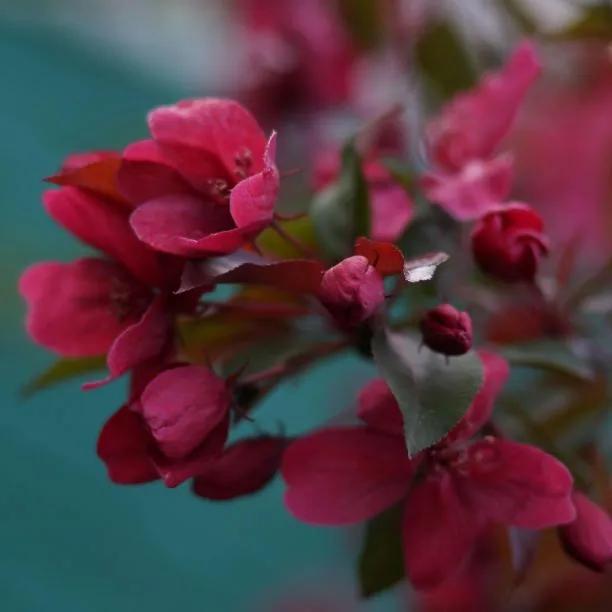Director Moerland Crabapple, Large Trees

The details
- Purple young leaves & fruit, pink flowers. V. disease resistant.
- Max. Height: 7m
- Bareroot Delivery: Nov-Mar.
Recommended extras
Description
Malus Moerlandsii - Director Moerland Ornamental Crabapple
Malus moerlandsii crabapple trees are also known as Director Moerland. It is disease resistant crabapple tree and was bred to resist canker and mildew, which can be problems for some of the other red or purple leaved crabapples. It has proven to be a success on the disease front and is every bit as pretty as its relatives. The young leaves are a fantastic crimson-purple, deepening to a rich green as they develop. The wine pink flowers are abundant and create a lovely layered colour effect with the foliage - bees go mad for them too. It has a rich autumn display and when the leaves have all fallen, the small, purplish fruit will continue to adorn the branches for several months. One of the best for a combination of foliage, flower, fruit and ease.
Malus moerlandsii can reach a height of about 7 metres.
Browse our variety of crab apple trees or see our full range of trees.
How Standard Trees are Measured:
All the plants in the ornamental trees section are graded as standards, which means that they are measured by their girth in centimetres 1 metre above ground level (basically, their trunk's waist measurement). They aren't measured by their height, which will vary. So, a 6/8 standard has a trunk with a circumference of 6-8 centimetres and an 8/10 standard has a trunk 8-10 centimetres around. This measurement makes no difference to the tree's final height.
Standard trees are 2 - 3.5 metres tall (on average) when they arrive; they are the most mature trees that you can buy from us. We cannot tell you precisely how tall your trees will be before we deliver them.
Planting Instructions
Notes on planting Malus moerlandsii:
Crabapples are tough plants that thrive in any moderately fertile soil. They tolerate shade well, although we recommend planting them in full sun to get the best display of flowers and fruit. Although a moist, well drained site is ideal, crabapples like heavy clay and don't mind a bit of waterlogging in winter.
They won't grow in deep shade and may struggle in very poor dry soil.
Prepare your site before planting:
It is good to dig over the site where you plant a tree several months in advance. Kill the weeds first: for tough weeds like nettles, brambles and ground elder, you will usually need a weed-killer to get rid of them. When you dig the soil over, remove stones and other rubbish and mix in well rotted compost or manure down to the depth of about 2 spades.
Watch our video on how to plant a tree for full instructions.
Remember to water establishing trees during dry weather for at least a year after planting.
Tree Planting accessories:
Prepare your site for planting by killing the weeds and grass.
You can buy a tree planting pack with a wooden stake & rubber tie to support the tree and a mulch mat with pegs to protect the soil around the base of your tree from weeds and drying out.
We suggest that you use mycorrhizal "friendly fungi" on the roots of all newly planted large trees: if your soil quality is poor, we strongly recommend it.
You can also improve your soil with bonemeal organic fertiliser.
After you plant a tree, the most important thing to do is water it in dry weather. You will also need to weed around the plants. Watering should be thorough, so the ground is soaked. Let the soil almost dry out before watering again. Watering & weeding will be necessary for at least a year after planting.
If your trees do need pruning, it is ideal to do this in winter. Always hire a tree surgeon to remove large branches.
Special notes on caring for your trees:
Malus moerlandsii is an ornamental tree that will perform best when it receives a yearly mulch of well-rotted manure or compost to help keep the soil around it fertile.
Remember to check the stake and tie supporting your trees a few times a year. Tighten the tie if it becomes loose and loosen it as the tree grows. Make sure that the tree's trunk isn't rubbing against the stake.
Hygiene & Diseases:
Dead, damaged or diseased wood can be pruned off as soon as it appears.
Disinfect your pruning tools between every cut if there is any sign of disease.
Burn or dispose of any diseased material, do not compost it.


